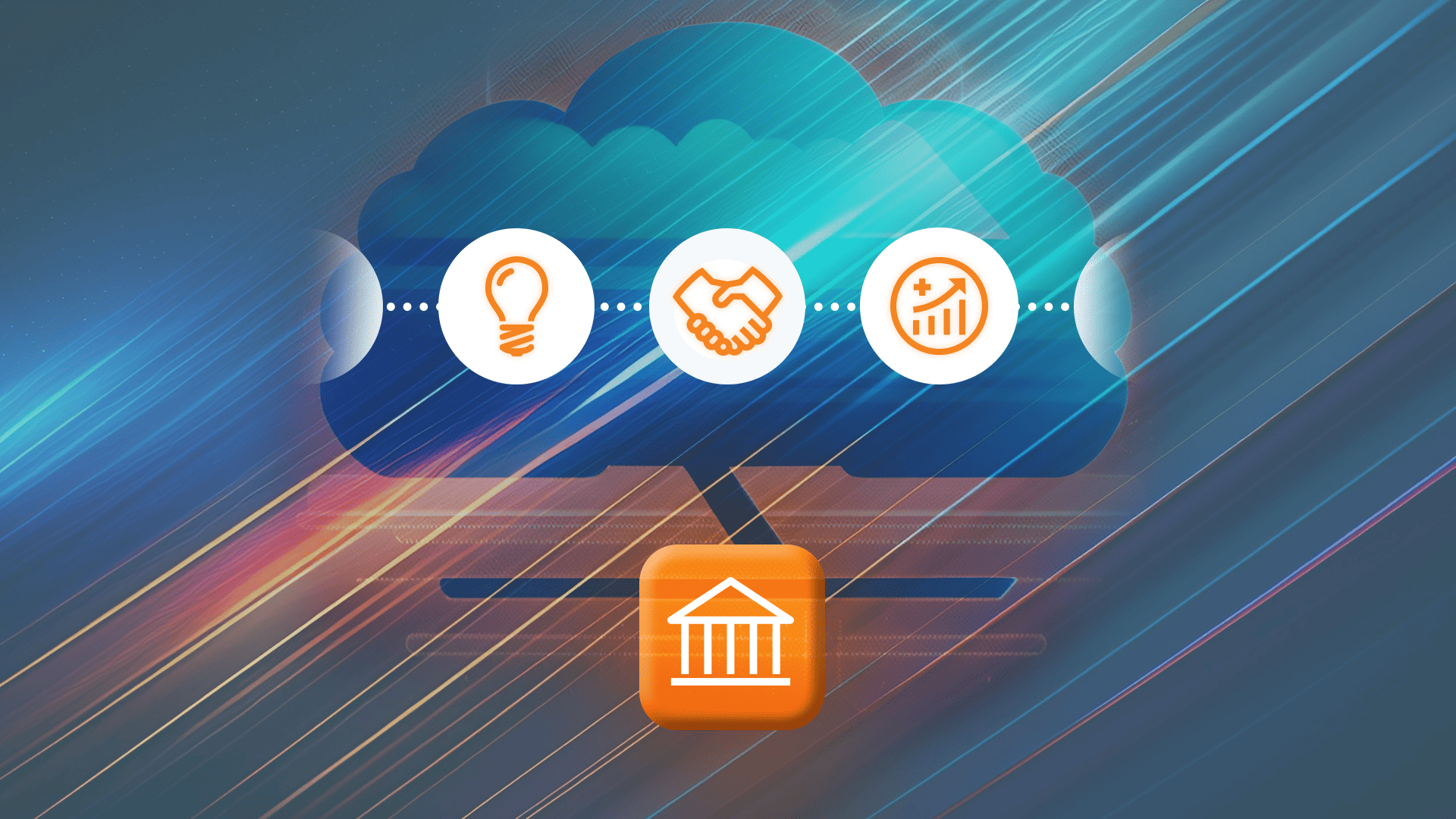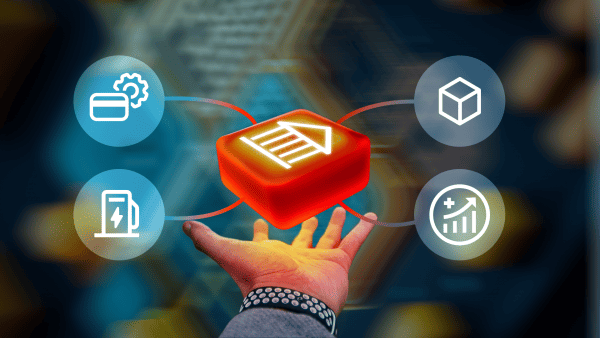When it comes to telecoms and telecom billing management, the “before times” (aka before the 1980s) were defined by one word: monopoly. Yes, anyone reading this of a certain age is thinking of events like the AT&T / Bell breakup, and the tendency for telephone companies to take the form of massive corporations and state-run enterprises. But the mastodon era of telecoms and telecom software vendors had wider ramifications than you think. As did its inevitable fall.
So, let’s tell the story of the evolution of telecom billing management. Along the way, you might learn a little more about how modern technology is liberating CSPs, MVNOs, ISPs, and all of their customers from high prices and low choices. (And even protecting us all from crime!)
How Frustration with Telecom Monopolies (Eventually) Led to Better Billing Systems
All the monopolization of that mastodon era was seriously limiting customer choice. But it was also hurting the telecom industry itself. How? It was limiting the potential for better telecom billing processes.

During that era, telecom billing processes were extremely opaque. Everything was post-paid. (Meaning, customers paid at the end of each month based on their usage.) From the customer’s perspective, the amounts charged for their various usages could seem arbitrary. Only the company insiders knew the true costs.
That, obviously, led to systemic overbilling. And systematic overbilling led to customer outrage – and pressure for government action. So, by the 1980s, that action started to come into play in the industry. Antitrust suits designed to break up monopolies joined forces with market deregulation and privatization of state-owned enterprises. Together, it all began to challenge the system. (Like that aforementioned 1982 order that broke up the AT&T / Bell monopoly.)
A New – Smaller – Era in Telecom Billing
Once the break-ups and privatizations were complete, competition began to emerge between telecom providers.
However, there was a problem with all of that deregulation. You see, the wired backbone of the system, which was once owned by a single entity, was now owned by different, often regional companies. A local telco that needed to connect a call from one region to another or even to a different country now had to rely on the network of some other provider (or several other providers). It all depended on who owned the wiring infrastructure in a given area.

Not efficient, to say the least. Especially in an era without much in the way of automated systems.
So, yes, the customer might have been benefiting from competitive pricing structures. But the billing system itself had become vastly more complex. Customers were often opening up their monthly bill (that came in the mail!) only to be sent reeling by a massive amount owing they had no idea was coming. (Yes, bill shock was a thing even before the early days of roaming.)
Some customers were simply unable to pay. That left communication service providers on the hook for all those inter-company connection costs. The good news? That corporate conundrum brought about a corporate solution. Hello, pre-paid billing.
Pre-Paid: A Precursor to Real-Time Telecom Billing Management
But let’s step back a bit. It wasn’t just your typical angry residential customer driving the birth of the real-time telecom billing system. Immigrants, international students, and travelers also played a big role. This was the era of the pay phone, remember. And of cash money. Not convenient if you are living in a dorm and trying to call home. (The coins you’d need for that kind of long-distance call would weigh down your pockets pretty fast.) Recognizing an opportunity to simplify the process for everyone, companies came up with the idea of pre-paid calling cards. These cards began to take off in the mid-to-late 1980s and surged in popularity through the 1990s.
A customer could add credit to their cards or buy them as needed in predetermined amounts. When they used up their balance, the call was cut off. This not only made life easier (and coin-free), it also helped the consumer immensely by eliminating bill shock. For the telecom companies though, it forced a transition. They needed modern computerized systems that could handle real-time usage tracking and billing. This was a tall order. It also required what was, at the time, a very substantial investment in new telecom billing services.
The Dawn of Telecom Billing Management
The rise of the mobile phone era in the late 1990s brought even more complexity to telecom billing and charging. That created a demand for a more robust type of telecom billing solution. Telecom billing management became a kind of industry on its own.
Let us give you an idea of the kind of complexity telecoms and customers were only just beginning to taste. Say a company has started offering their customers packages with defined limits on various telecom services. For a set amount per month, for example, a user might gain access to 100 call minutes, but only within a specified area, or sometimes to a specified country. Those calling outside that local area or to countries outside of their agreement would incur long-distance charges.
Different regions also had different rules on what counted as a charged minute. For example, in some regions your provider might only charge you for your outgoing calls. In others, they might charge you for both incoming and outgoing calls.
Skype as a Real-World Case Study in the Problems with Rigid Billing
Want an example of how this kind of complexity could sink a business idea in the days before flexible telecom billing? Let’s look at Skype.
In its early days, Skype tried to monetize its service by offering a subscription model. For a certain monthly charge, you’d get a set number of long-distance minutes of calling to, say, Europe. But the prices of calling different countries within a region were often wildly different. It would also change depending on whether you were calling a landline or a mobile. Skype did not have a billing system that was flexible enough to accommodate those differences, so the company had to footnote the service with all kinds of disclaimers, for example: “This offer only includes these specific countries, and only includes landlines, etc.” The limitations and uncertainty turned customers off, and the concept failed. (If Skype had had a flexible telecom billing system like PortaBilling back then, perhaps they could have later given Zoom some stiffer competition.)
As the number of mobile users began to skyrocket, so too did that billing complexity. And not just for upstarts like Skype, but across the entire industry. Each user could be on any number of different plans and be calling or texting anywhere from America to Zimbabwe. It was so complex that telecom companies themselves often outsourced the record-keeping. That created a new kind of sub-industry: the telecom billing software company.
How Telecom Billing Software Works
To better understand how modern telecom billing software works, you first might need to get familiar with a few key acronyms. Let’s break down the basic structure and architecture of telecom billing solutions piece by piece to help you see how they all fit together into one system.

CDR (Call Detail Record)
This is a set of data that includes basic information about a single call that has been made, such as the caller’s number, the number of the person receiving the call, and the time the call began and ended.
CDI (Call Data Information)
This data set includes more detailed information, such as the quality of connection, the precise locations, and any network issues along the path of the call
xDR (Extended Detail Record)
This is the evolution of the CDR. An xDR contains all of the precise data that is truly necessary for telecom companies to successfully bill each other and the customer. It can also encompass more types of modern communication (text, video, and more). Route-based billing depending on the path of the call, service plan details, peak time charges, and taxation and regulatory charges are all included in this critical file.
BSS (Business Support System)
These systems, including those developed by PortaOne, use software to manage billing, account management, and invoicing. It’s safe to say that BSS (and OSS, or operations support systems) have become the backbone of telecom.
OCS (Online Charging System)
This is the real-time billing referee that manages the billing of calls instantaneously. It is also a critical part of ensuring that customers are not overbilled and that plan limits are not breached.
Telecom switching and billing companies (such as, say, PortaOne!) use all of these different acronyms – aka, pieces of information and software-based systems – to ensure a seamless experience for both the customer and the telecom company.
The Outsource Model of Telecom Billing Services
It might be worth adding a side note here on CDRs, in the context of telecom billing. In the old days, many telecom companies would outsource the work of calculating pricing for their CDRs (called “rating” in the telecom industry), along with the production of customer invoices. As an example, a PortaOne customer in Scandinavia used to subscribe to a service called CDRator, which billed by the number of CDRs. (Or xDRs, whichever the case may be.)
This caused a lot of headaches, however. The number of CDRs kept on rising all the time (along with the cost of the rating calculations). And those CDRs weren’t always associated directly with their business. (For example, they might be incoming calls to a call center that does not get charged per call.) It also created complications when it came to service authorization, such as when a customer subscribed to a service (e.g., call forwarding for 99 cents per month) but quickly unsubscribed and that service would need to be turned off.
What Are the Benefits of Telecom Billing Systems?
The primary benefits of telecom billing software systems are scalability, visibility, and accountability. As long as the hardware infrastructure itself is capable of carrying enough bandwidth, software switching and billing can scale to meet any demand.
Furthermore, in modern systems, all of the necessary data is in the cloud. That means it is accessible to every telco involved in every individual call or text message. This unparalleled, top-down view is what has made SaaS (software as a service) such a hit. Why invest hugely in the necessary equipment, space, power, human resources, and engineering expertise to host a massive hardware system on-premise when you can get access to all those same telecom billing services on tap? (Okay, there are situations where on-site infrastructure might be the right call. But for most small and mid-sized telecoms and even many large ones, making the move to the cloud is a compelling choice. Though there are caveats here that we’ll discuss a little later on…)
Beyond that, with the advanced data contained within CDRs and xDRs, telecom companies have the ability to recognize patterns, make usage predictions, and provide better services overall.
And all those digital records mean that telecom billing systems make resolving disputes much easier. The systems log every detail meticulously, making error tracing a breeze. Even better, admins can often find a fix in seconds rather than hours.
Telecom Billing Systems and Fraud Prevention
There is one final benefit to a good telecom billing system that deserves to stand out. Once upon a time a telecom would have a switch, it would generate the CDRs, those records would be sent for processing, and the invoices would be mailed. The systems processed data in batches, it was all post-paid, and in general it was a lot of hassle. (Plus, there was a lot of room for fraud.) But telecom teams got used to it.
Then came the pre-paid card era, and everything flipped over on its head. All that data processing and charging had to be done very quickly – like, instantly. And, initially, many systems would authorize for the amount that was on the balance sheet. So, if you have $2 in value and it costs 10 cents per minute to call, say, Vietnam, you can talk for 20 minutes.
Well, some users caught on to a trick. If you and 10 friends did some planning, you could all jump on the phone at the same time and log in using the same card. And because the system wasn’t fast enough, you could all use that same $2 before anyone at the telecom noticed. Effectively, you could snatch $20 worth of calling value for two bucks.
That’s part of why good modern telecom billing systems authorize everything in real-time. In PortaBilling, terms like pre-paid and post-paid are just ways to describe balance. (For example, you have $100 or you owe us $100.) But in terms of the delivery of charging for actual use, these things are the same. So with a real-time billing and charging system, this kind of fraud is no longer possible.
How to Categorize Telecom Billing Systems
Let’s kick off this section by noting that this is by no means an official or technical categorization system. These three “telecom billing system categories” are more or less the chronological evolution that we’ve witnessed in the telecom billing system vendor landscape over our 20+ years of doing business in it.
1. The Mastodons
These are the large, complex vendors that offer those “black box” products we talked about. Think: Amdocs, Huawei, Nokia, and so on. In the early days of software-based telecom systems, many companies believed it was better to buy everything from one vendor. If they didn’t, they thought, the different vendors would quarrel with each other and that would be the end of their business. The result was that these all-in-one, uncustomizable systems became complicated, tedious, and expensive. And once all of a telecom’s systems were integrated with the one vendor, that vendor would have to hit some pretty extreme levels of poor service to get that telecom to start the work of extricating themselves. Not a great situation.
2. The Connectors
We like to think that we belong in this category. (So much so that we use the word for the title of this very blog.) As telecom business systems developed over the years, companies like PortaBilling came in with a more open, customizable approach. Rather than assume we can meet every need of every CSP, MVNO, or ISP (or smart grid manufacturer, or fleet management firm… you get the idea), we took the view that we should allow our partners to customize our platforms, or integrate them with their existing systems (ERP, CRM, etc.). Or even with brand-new add-ons that could help them get an emerging product to their customers fast.
It’s a shared belief that goes beyond software to become almost an “ism”. The beginning of this era also saw the rise of groups like TM Forum, which held to the idea that the industry should come together to define some standard interfaces for interaction between systems so that a provider can build their ecosystem as if from Lego bricks. If you like our BSS and OCS, and you also like the CRM from Salesforce, then why not put them together? That way you get the best of breed for every part of your system, instead of a package deal that might have a good OCS but a slapdash CRM that doesn’t bill accurately.
3. The Born-in-the Clouds
SaaS is becoming pretty universal across most telecom vendors, but these are the “cloud native” new kids on the block who never did anything any other kind of way. That’s all great (we mean it! we are very pro-cloud!), but, of course, there is a but. Cloud purity is a great concept, but the fact is that, in the real world, most telecoms do have to deal with legacy systems: older software, older infrastructure, older patches that have built up along the way. Plus there are the systems and regulations of your MNO, and the systems and regulations of your regional governments. (For example, ICASA in South Africa recently changed their billing regulations to demand three notifications. So, what do you do if your “pure” cloud system only allows for two?)
As a real-world example, one company we brought on had 34 types of base stations, each of which had to be provisioned (plus scripts written, plus API integrations…), along with 2000 (!) legacy systems, of which 1900 were not needed.
All of this to say, native SaaS solutions are fine, but only so long as they work exactly as you need them to. That pre-fab SaaS solution will be the same for you as it is for your competitor. And for a rural MVNO in Zimbabwe. And for a low-cost downtown telco in Canada. What are the chances that they’ll make challenging changes to that system just for you? Sounds a bit like the all-in-one mastodon era, in our view. But we’re happy to wait and see how this trend evolves.
Okay… So… What Is the Right Telecom Billing Solution?
We broke down the why and the who. Now let’s get to the which. There are a lot of players in the telecom billing market. Which one is right for you?
The telecom billing process doesn’t have to be complicated. But it should be seamless. Errors, missteps, and even misplaced decimals can wreak havoc across systems and have far-reaching and costly implications.
Make sure that the telecom billing platforms you choose have the flexibility to align with your goals and scale – now, and 10 years from now. (You don’t ever want to be in a situation where you are afraid of growth because of the limits of your software.) Perhaps most importantly, make sure you are able to customize it to the specific needs of your customers.
Many telecom billing solution vendors are going to offer you a single, fully loaded package… the very same one they offer every other telco. They’ll say that having it all is a benefit. The truth is, few companies need every feature listed in those packages – and they often find they need specialized features that don’t come in that sealed “black box.” A telecom billing solution with a modular approach, however, can grow and adapt with you.
Telecom Billing Systems for Today… and Tomorrow
In the early days of telecom billing, there were local calls, and maybe long-distance calls. Today, there is roaming, texting, video, live-streaming, wifi, multiple cellular service options, Netflix bundles, even shopping points systems and other retail and restaurant tie-ins for mobile users.
Then there is the Internet of Things (IoT): a space that is growing exponentially. A telecom billing system must be ready to handle not only voice and data traffic but also millions of autonomous and semi-autonomous devices – constantly transmitting data via embedded SIM cards linked to subscription services.
Vending machines and ATMs were some of the first to be connected to the internet via wireless communication. These are arguably the most visible examples. The rabbit hole goes far deeper.
Large companies now use SIM card-embedded devices to track an array of assets such as vehicle fleet management, point of sale terminals (a fancy word for cash registers), and security cameras in remote locations – all talking to each other in P2A, A2P, and M2M systems. Beyond that, there are smart meters, weather stations, traffic management systems. And many of these devices and systems are controlled in part or wholly by AI.
As artificial intelligence expands and the computing power it needs to operate grows, so too will the amount of data that’s being transmitted. All that data, devices, SIMs, and eSIMs require tracking and billing. It has become incredibly complex. But if you have a flexible enough system, that complexity can turn out to be quite easy to navigate. Want an example? We recently adapted our telecom billing platform to be able to handle a charging system (like, power-up-the-battery style charging, but also money charging) for electric vehicles.
What Is Telecom Billing for You? Talk to Us and Let’s Find Out Together
As our lives continue to change in unimaginable ways, what will come in the world of telecom billing systems tomorrow? What will come 10 or 20 years from now? We can’t know, but we can be ready to adapt to it.
Yes, the real-time tracking, charging, and billing of a hundred billion devices sounds daunting. And we’ve only just touched on the complexities of telecom billing when it comes to changing regional regulatory requirements. That’s why we’ve designed our telecom billing and charging solutions to make sure they are ready to adapt to any changes in the telecom landscape. And to be ready to scale proactively.
IoT and AI are just the beginning of our evermore connected world. We’re more than sure there are ideas being cooked up in IT research labs that have yet to be glimpsed by the public. These will further automate, organize, and facilitate nearly every aspect of our digital and even physical lives.
Have a complicated billing problem in a unique regulatory environment? PortaOne offers a customizable telecom billing management system that you can tailor to the needs of your region (and budget). Growing fast and needing additional capabilities? We offer unparalleled scalability with add-on and customized solutions to ensure a comprehensive and individualized package. Even better, our open API allows you to also to integrate your existing systems into ours.
Want to talk about how we can help you design a customized telecom billing solution that fits your needs? Get in touch with our (very much not AI) team. We’d love to hear from you.
Telecom Billing FAQs
Telecom billing management is the collective term for the various systems and processes that telecommunications companies use to record their customers’ usage, calculate the charges, send the invoices, and track the payments and payment statuses. In the old days, this was all done by massive teams of human administrators. (Including actual paper and actual mail rooms.) Today, telecom billing management is handled by sophisticated software solutions. The most modern and streamlined of these conduct these processes automatically. They are also integrated into other systems, such as CRM (customer relationship management) and ERP (enterprise resource planning). PortaOne offers a robust and customizable telecom billing management solution called PortaBilling. Find out more about PortaBilling here.
Telecom billing software solutions are the actual systems that telecoms use to conduct their telecom billing management. (See the previous FAQ entry for more detail.) These systems track and bill for customer usage. Robust systems also manage access to the service and the way it is delivered in the context of the terms of the service contract, payment status, and current regional regulations. Solutions like PortaBilling can operate on their own, or within a larger BSS/OSS system like PortaSwitch. They can also be expanded with added functionalities via the integration of no- and low-code add-on services.
Telecom billing services include rating (setting the price for a given service), charging (tracking a customer’s usage in the context of the rates for the services they are using), billing (the creation and sending of an invoice to the customer, either electronically or by snail mail), and payment tracking and processing (for example, automated debit payments, automated credit card payments, one-time payments, vouchers and scratch cards, pre-paid and post-paid services). For modern telecoms, these services are usually handled by a robust telecom billing software solution such as PortaBilling.
How you integrate your telecom billing solution into your existing systems will very much depend on your system. To begin designing your customer process, it is important to do some pre-planning. First, nail down your goals and desired outcomes for your final, complete integrated system. The next steps are to conduct a deep analysis of your existing system to define its current limitations and pain points, and to understand your budget and resources. You will also want to ensure that the system you design has the capability to scale and adapt to any future needs. (Whether you can see them coming or not.) If you’d like to get this conversation started, reach out to our PortaOne team. We’d love to talk about where you are now, where you want to go, and how you can get there, independently or with our help. You can also dive into some of our success stories, which each illustrate a complex system design challenge and how we partnered with the telecom to make it happen.
If you are looking to integrate your telecom billing solution with value-added services (VAS), on the other hand, this can often be much easier than you think. (Thanks to low-code and no-code approaches.) Check out the PortaOne Add-on Mart for a look at the kind of low- and no-code VAS tools that are available for PortaBilling.
Telecom businesses such as CSPs, MVNOs, and ISPs use automated billing software solutions to help them manage rating, usage tracking, charging, invoicing, and payment processing. (See the answers above for more detail on each of these processes.) A telecom billing solution can operate within an on-premise hardware system, or be delivered as a cloud-based SaaS solution. Cloud-based solutions are typically easier to deploy and manage. On-premises solutions, meanwhile, might offer more control for larger companies that can afford to invest in large hardware installations.
Their are many benefits to a good automated telecom billing solution for business. These include reduced labor costs, faster turnarounds, improved efficiency, and increased customer satisfaction. Telecom customers especially appreciate the convenience and control of transparent billing and charging, along with browser-based and mobile self-service portals.
PortaOne offers a robust and customizable telecom billing management solution for business. Find out more about PortaBilling here.











